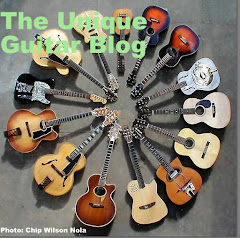It also brought to mind a story I was told by an old friend of mine who ran into the “Doctor” several years ago at a Louisville Kentucky music store. He found the Doctor to be a warm and wonderful man. After talking for about an hour with Mike Zaite, my friend walked out of the store with a brand new Dr. Z Carmen Ghia amplifier.
 |
| Dr. Z aka Mike Zaite |
 |
| Dr. Z Carmen Ghia |
Mike Zatite got his feet wet in the music business by building PA’s for local bands. Zaite admits to “studying and tweaking the inner workings of his band mate’s amplifiers, when the players were not around.
 |
| Kent State - Four Dead in Ohio |
He eventually went off to Kent State University and obtained a degree in electronics. It was during those years he became acquainted with another fellow electronics student, Joe Walsh. This relationship became very eventful in later years.
| Mike Zaite |
Zaite went on to a lucrative job as a medical electronic engineer for General Electric. But Zaite’s first love was tinkering with analog electronics, such as amplifiers and P.A.’s.
| Joe Walsh |
This publicity was a large boost for Dr. Z amps. This amplifier designed for Walsh, was originally conceived as a head, but later was sold as a reverb combo amplifier.
| Dr. Z SZR-65 |
This gave the amplifier the smooth feel of triode tubes with the power of pentode tubes.
| Hammond Organ Reverb Unit |
Zaite's first guitar amplifiers, were based on the design of a Hammond organ reverb amplifier. He made modifications to the original schematic, thus making it his own version.
| Dr. Z Carmen Ghia |
His first commercially available amplifier was the 18-watt Carmen Ghia, which was powered by twin EL84 tubes, a 12AX7, and a 5751, both for the pre-amp section. The only two controls on the Carmen Ghia were volume and tone.
This is the amp he based on the Hammond Reverb power amp. I assumed it was named for the Volkswagen sports car of the 1960’s, however it was actually named for his grandson, Carmen.
It was this amp catapulted his career and was based on the fact that at the time players had developed an interest in lower power amps that could be overdriven at low volumes.
 |
| Dr. Z DB4 |
 |
| Check out those tidy leads |
Zaite follows these guidelines in his construction by using chromate converted aluminum coating for his amplifiers chassis. This improves the grounding of the amplifier, by raising the conductivity of the chassis. Some early Marshall amps used aluminum for the chassis, and so did Ken Fisher in the design of his Trainwreck amp as well as some other boutique amplifiers.
Dr. Z also uses specially designed coupling capacitors from Sprague. He purchases these in a very large batch, because his company is concerned about consistency.
Zaite prefers Celestion speakers and most of the earlier models used Celestions.
However Dr. Z has created his own line of speakers. Some newer amps use Dr. Z speakers and other models come with Celestion speakers.
Zaite also offers the Z-Best speaker cabinet. This is a 2 – 12” ported specially designed cabinet that has an adjustable shelf behind the speakers and is based on the long throw ported Theile design.
Most of us are familiar with the fact that different style cabinets are just as important as tone controls. The adjustable shelf in the Z-Best cabinet offers a variety of sounds to fit your style.
This closed-back cabinet comes with a variety of drivers, depending on your desired tone.
Dr. Z also offers a 2 – 12” open back cabinet. He also offers cabinets that feature one or two 12" speakers, or a cabinet with four 10” speakers.
The doctor also has developed a Lens for speakers on amps that have open-back cabinets. The Lens is similar to the Tone Ring that was used on older Fender amps. Dr. Z’s Lens is adjustable, for desired sound projection.
There are two other features that make “Z’s” stand apart. One of them is the Cut control. This feature is tied into the output tubes and gives the player the ability to scoop frequencies and give the sound more or less brightness.
 |
| 1930's Amp with a Conjunctive Filter |
The other less obvious feature is what Zaite refers to as a conjunctive filter, which affects the impedance of the transformer allowing frequencies to be balanced, thus providing even amplitude across the spectrum.
If the players picking is even on each string, he or she will get the same volume on each string, making the sound more dynamic.
This unusual tube is used on high end stereos for accurate transfer of signal, balance and headroom.
 |
| Dr. Z Brake Lite |
Getting back to that Dr. Z amp featured in the Toyota Prius ad. I’m not certain if there was an actual connection with Zaite’s company. I am told the director was a fan of Dr. Z amps and thought the amp was cool looking and just fit into the aesthetic nature of the advertisement.
| Dr. Z MAZ 18 |
\







































